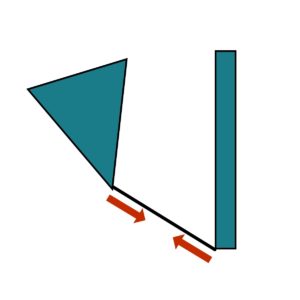In May 2020 I created a new article blending two older posts written in May 2010—"1,2,3,4 We Like Our Pelvic Floor" and "The Kegel Saga Continues." The content is similar but by being blended it's more cohesive, and it also includes fresh graphics, and updated resources. If you're looking for more on the pelvis, find our overarching movement philosophy and how it relates to pelvic issues, as well as more pelvis and pelvic-floor articles, exercises, and recommendations at Our Best "Healthy Pelvis" Resources.
The Great Kegel Debates launched with a quickie interview on Kegels I did with Kara Thom, author of See Mom Run, and an expert on keeping fit during pregnancy and motherhood (sounds easy). Like all quick interviews, short online articles and their headlines, there's volumes of information left out. There was a flurry of activity the week after the article, and thus there was also a follow-up interview.
When giving interviews you don't get to pick the questions you're asked and you certainly don't get to provide any necessary diagrams, so below, here's some more technical information (and crappy pictures!) as to why the glutes are an important, not-to-be-neglected part of a healthy pelvis, and why Kegels are not a complete program.
Starting simply, let's talk about lever systems.
The pelvic floor muscles run between the sacrum (the triangular bone at the base of the spine) and the pubic area (the bottom-front of the pelvis), and when these muscles shorten, they can rotate the sacrum closer to the front of the pelvis (a motion called sacral counternutation). Below, the red arrows show the direction of the Kegel contraction.
When pelvic floor muscles are too tight, they can pull the sacrum out of alignment, bringing it forward, into the bowl of the pelvis, decreasing pelvic floor strength.
Now, there are many levers in the body that can be toggled by your muscles and by gravity. One example is how your biceps can bend the elbow and pick up your forearm, and all it takes to lengthen them back out is a little biceps relaxation + gravity. The lever systems of the pelvis are different because the sacrum isn't toggled back by gravity; in order to move it back you need something that pulls in the opposite direction of the pelvic floor. Like your butt.
The gluteal (butt) muscles attach to and pull on the opposite side of your sacrum. Rotating the sacrum out of the pelvic bowl (a motion called sacral nutation) stabilizes the sacrum and keeps it from moving in the direction the pelvic floor muscles (PFM) are pulling. The green arrow below shows the net direction of pull provided by gluteal contraction.
Muscles need resistance in order to generate force. The shorter and shorter a muscle gets, the less and less force it can produce when contracting. The tensile pull from the glutes prevents the sacrum from collapsing into the pelvic bowl. By stabilizing the sacrum, the PFM can better contract. Healthy pelvic floors require supple and strong glutes and PF muscles working together, making it so both can move well for a long while.
In the great Kegel debates, the message keeps wanting to boil down to "swap your kegels for squats" but I think this is a woeful misunderstanding. My point on the Kegel matter (and you can read more on all of this in Move Your DNA), is that, to stay well, your pelvis needs way more movement than what's found in a sedentary culture. That the tremendous number of pelvic issues we're facing are due to how little we have moved through our lifetime. One exercise certainly won't cut it in a robust way, especially if that one movement moves the mechanical situation in the wrong direction.
You can work towards building a butt by doing exercises found in You Don't Know Squat, You Still Don't Know Squat, and Get Your Butt Here. Butt also, walking, when done in a certain alignment, uses the butt. When you use the butt with every step, then every step the glutes are working to balance the load of the organs on the pelvic floor. In short, exercises will only get you so far but moving more throughout the day and throughout a life will get you farther.


